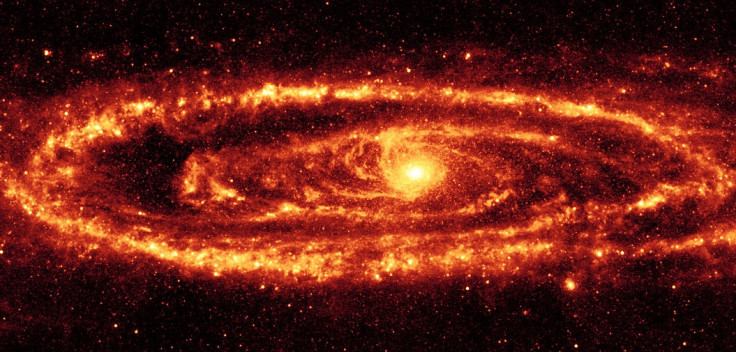Mystery of Cosmic Dust Origin Solved: Explosive Death of Supernovas Created 'Stardust Factories'

Astronomers have solved a long-standing mystery into the birth of cosmic dust in the universe, with the help of a violent supernova in a distant galaxy.
By observing a bright supernova called SN20 10jl, the dying throes of a giant star around 40 times the size of our sun, the researchers discovered a cosmic dust "factory".
Using the Very Large Telescope in Chile, the international team of astronomers made 10 observations of the supernova from 2010 for two-and-a-half years. The data allowed them to formulate a timeline of how a supernova creates dust, the size of the particles and their material.
The grains of interstellar dust are the foundations for stars and planets.
It was previously understood that cosmic dust is the residue of supernova explosions, but how the grains condensed out of the stellar material and survived the shock waves of the immense blasts of a dying star was unknown.
The high temperatures and fast-moving material emitted by the supernovas have long been considered unsuitable for forming dust, which favours cooler temperatures.
"The problem has been that even though dust grains composed of heavy elements would form in supernovae, the supernova explosion is so violent that the grains of dust may not survive," study co-investigator Jens Hjorth, of the University of Copenhagen, told The Space Reporter.
Writing in the journal Nature, the astronomers explain that dust formation begins quickly when the supernova begins to explode and is ongoing for a long time following the initial eruption.
A short time before the initial explosion, the dying star throws off gases rich with carbon, helium and hydrogen that form a shell around the star.
Researchers made the discovery after taking the first direct measurements of how the dust around a supernova absorbs both visible and infrared light.
"When the star explodes, the shockwave hits the dense gas cloud like a brick wall," study lead author Christa Gall, of Aarhus University in Denmark, told Space.com. "It is all in gas form and incredibly hot, but when the eruption hits the 'wall' the gas gets compressed and cools down to about 2,000⁰."
At those densities and temperatures, the elements in the gas can come together, or nucleate, to form solid particles, Gall added.
The new research also revealed that the newly-created dust particles are significantly larger than those seen in the Milky Way today.
"We measured dust grains as large as around one micron (a thousandth of a millimetre), which is large for cosmic dust grains. They are so large that they can survive their onward journey out into the galaxy," she said, as quoted by Science News.
© Copyright IBTimes 2024. All rights reserved.






